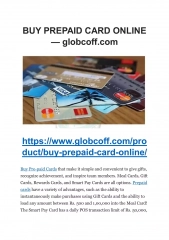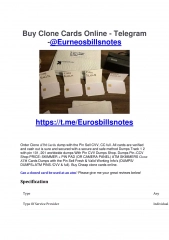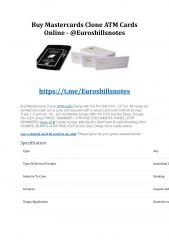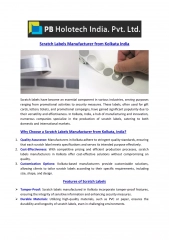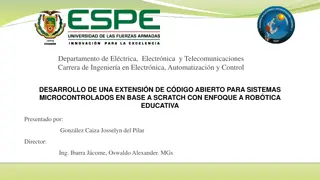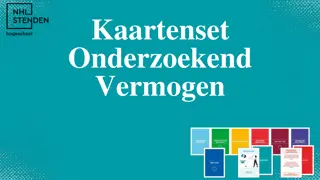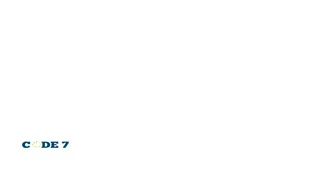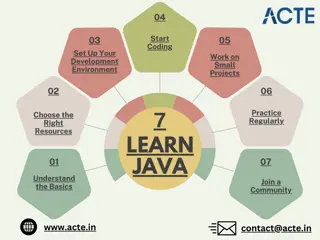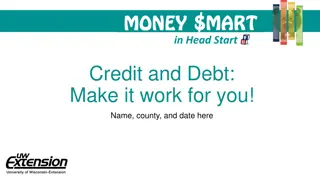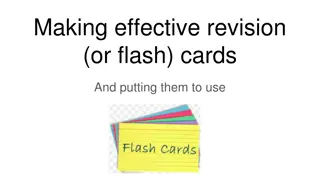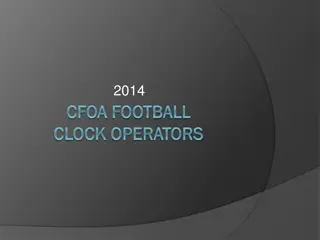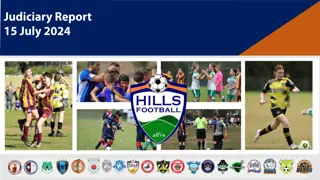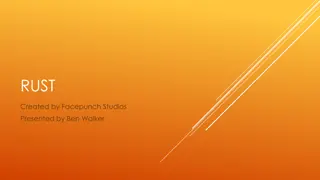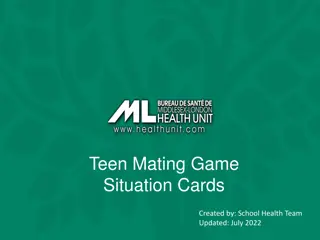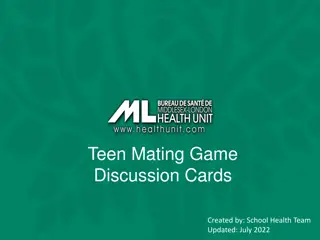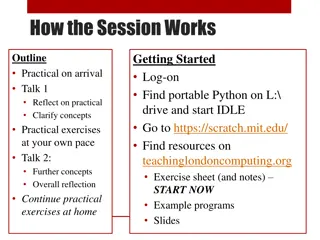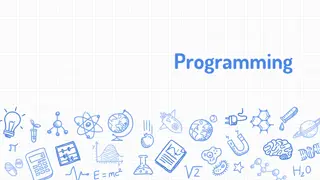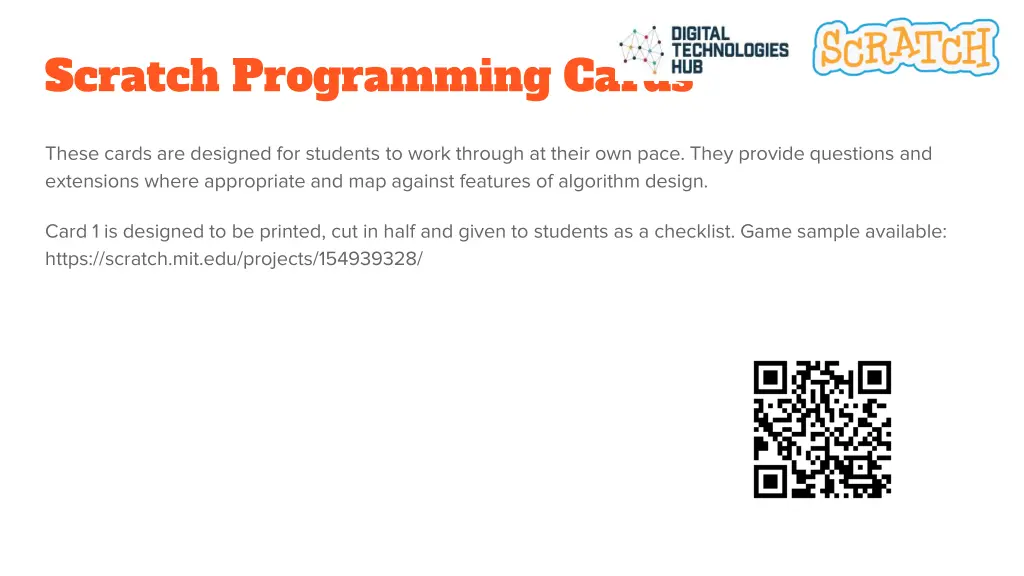
Scratch Programming Cards: Algorithm Design Checklist for Students
"Explore Scratch Programming Cards designed to enhance algorithm design skills for students. The cards cover topics such as sequence, selection, repetition, and interactive elements like moving with mouse and keypress. Dive into engaging questions, extensions, and game samples to enhance coding knowledge."
Download Presentation

Please find below an Image/Link to download the presentation.
The content on the website is provided AS IS for your information and personal use only. It may not be sold, licensed, or shared on other websites without obtaining consent from the author. If you encounter any issues during the download, it is possible that the publisher has removed the file from their server.
You are allowed to download the files provided on this website for personal or commercial use, subject to the condition that they are used lawfully. All files are the property of their respective owners.
The content on the website is provided AS IS for your information and personal use only. It may not be sold, licensed, or shared on other websites without obtaining consent from the author.
E N D
Presentation Transcript
Scratch Programming Cards These cards are designed for students to work through at their own pace. They provide questions and extensions where appropriate and map against features of algorithm design. Card 1 is designed to be printed, cut in half and given to students as a checklist. Game sample available: https://scratch.mit.edu/projects/154939328/
Scratch Programming Cards Sequence Selection Repetition Changing scenes Hit test Variables Move with mouse Move with keypress Asking questions
Types of Blocks Action Blocks Event Blocks These blocks generally perform some action and click into blocks above and below them These blocks start a program, and connect things underneath, but not above. Control Blocks Data Blocks These blocks allow for control of the program through control structures: Sequence, selection and Repetition. Action blocks plug into different sections of these These blocks add data to your program. You might have some maths to do in your program. You would use these to import data to your program.
Sequence Questions What happens if you unlock one of the pieces? Wil this still work? Change some of the values in each motion block. What happens? Extension Try adding some wait time between each piece. Will it still work? What happens? Try changing the event block to a keypress. What happens when you click on the flag then? How do you get the code to start working?
Selection Questions Try the first program first, and click on the flag. What happens? Add the forever loop around it, click on the flag and watch the script. What happens? How can you use this information to troubleshoot programs in the future? Extension Try the if-then-else block to make the program do something if it s touching the mouse, and something else when it s not. This code is what you need to make a selection. However, if you want to test for an event (touching mouse pointer) for the entire program, you need to add a forever loop around it, so that it runs for the entire program.
Repitition Questions What is the difference between repeat and repeat until? You have already used the forever loop in the previous card, but there are other types of loops. Extension Can you put a selection block inside a repeat block? What happens?
Move with mouse Questions What happens when you click the flag? Move your mouse around the screen. What happens? Extension Try having two sprites where one is controlled by mouse and one by keyboard. Try integrating a mouse move with a hit test.
Move with key press Questions Why do we move in negative and positive numbers? Draw a cartesian grid in your books. Label which direction is up down, left and right. Imagine this as a circle, starting at 0 at the top, and label the directions around the circle. Extension It s important that the if statements are nested exactly as they are pictured left. What happens if you nest the if statements in a different way? Why is this?
Hit Test Questions Why do you need a forever loop on the hit test? To test whether one thing hitting is the basis of many You firstly need two characters and one these needs to be able to move in order to test the program Create two sprites. is another Extension Can you create a variable that increments every time that an object is hit? Can you create a wall of a particular colour and see if you can test whether you are hitting a colour rather than a sprite? games. of On Creature1:
Variables Firstly, you must create a variable by clicking on Data: Make a Variable. Call it something meaningful like Score Questions What other things could you use Variables for in a program? Extension Create a variable that decreases every time you hit something. Add a test to say that when that variable gets under zero, display a message saying Game Over Here, I ve added the Change Score by 1 instruction to my existing move by mouse program to increment the score every time it hits Sprite 1. It is also good programming practice to initialise variables when starting the program.
Asking Questions Questions What other things could you use this type of feature for? Extension Ask the user to input a number that is an answer to a maths problem, then see if you can test to see whether it is correct. If it is, then say Correct , otherwise, say Incorrect
Changing scenes 3 1 You then need to tell the stage to change when the message is received. Click on the stage element in the navigation. You can create a new backdrop for scene 2, You need some sort of event to change scenes.The following code is on Sprite 1 In this example, we have allocated a health value to Sprite 1, then set an initial value of 30 on the health value 4 Finally, the following code is placed on the stage. 2 We then set it to test if the creature is touching it, it decreases by 1 (-1) Questions Why the stop all in the code? Take it out and see what happens. Extension Create multiple levels and see if you can create buttons to progress to each level. Then, it tests to see if health is less than zero. If it is, it broadcasts a message.

